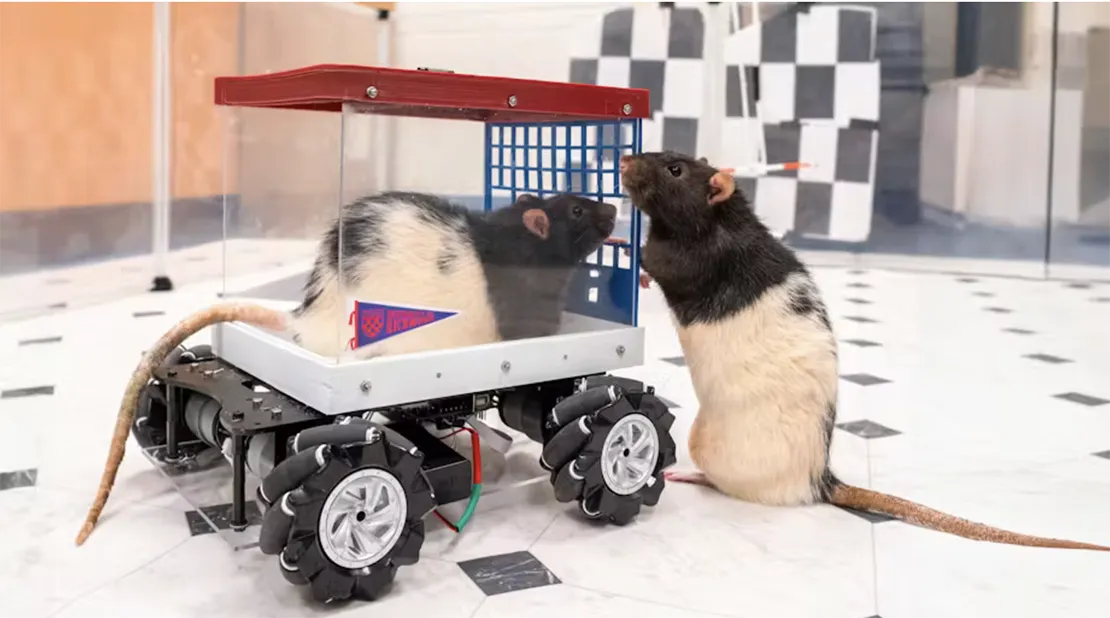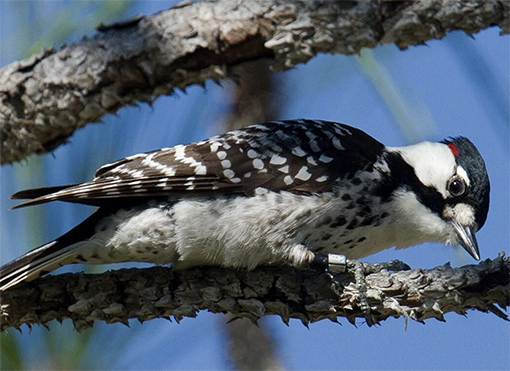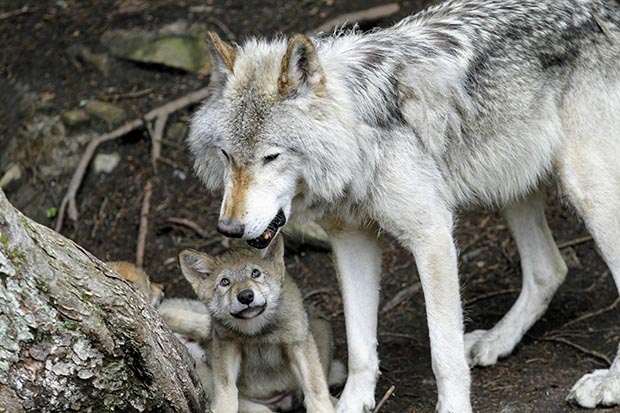December 11, 2024
Flora & Fauna: Joyrides for rats; feral pigs forage through Hawaii; serviceberry tree history; a unique "comeback" bird

Rats learned to love driving and would opt to take longer routes to get to their destination. (Photo by Kelly Lambert, CC BY-ND)
People aren't the only ones who love to go for a drive. Rats do, too. "I’m a neuroscientist who taught rats to drive − their joy suggests how anticipating fun can enrich human life," writes Kelly Lambert for The Conversation. "My colleagues and I found that rats could learn to drive forward by grasping a small wire that acted like a gas pedal. Before long, they were steering with surprising precision to reach a Froot Loop treat. . . . Unexpectedly, we found that the rats had an intense motivation for their driving training, often jumping into the car and revving the 'lever engine' before their vehicle hit the road. Why was that?" Read the research here.
In the lowlands of Hawaii, things are going to pigs. Feral pigs have invaded six of the state's islands with shocking efficiency and left a path of overwhelmed ecosystems in their wake. "Their impact is profound on Kaua‘i. Its mountains are home to 255 unique native plant species and 208 native birds, including 11 found nowhere else on Earth," reports Brendan Borrell of Hakai magazine. "Their wallows breed mosquitoes that spread avian malaria, contributing to 10 of Kaua‘i’s 16 native honeycreepers [birds] going extinct. . . . Despite the damage that feral pigs are causing, you can’t just shoot them on sight . . ."
 Like humans, a tree species has a history. The serviceberry tree was once common in the United States, particularly in colonial New England, where its bloom cycle indicated when the soil was soft enough to begin digging graves for the many settlers who didn't make it through the winter. "Preachers then went from settlement to settlement to perform funeral services," writes Jessica Damiano of The Associated Press. "Because it’s one of the earliest spring bloomers, the serviceberry is an important food source for bees, butterflies and other pollinators. Later, its berries sustain dozens of bird species and mammals. . . .There are more than 20 species of the North American native tree, which is sadly underused." Here are four favorites.
Like humans, a tree species has a history. The serviceberry tree was once common in the United States, particularly in colonial New England, where its bloom cycle indicated when the soil was soft enough to begin digging graves for the many settlers who didn't make it through the winter. "Preachers then went from settlement to settlement to perform funeral services," writes Jessica Damiano of The Associated Press. "Because it’s one of the earliest spring bloomers, the serviceberry is an important food source for bees, butterflies and other pollinators. Later, its berries sustain dozens of bird species and mammals. . . .There are more than 20 species of the North American native tree, which is sadly underused." Here are four favorites.
Whether it's that hefty frozen turkey, a delectable ham or ground lamb ready to be transformed into meatballs, the holidays can be a special time to be thankful for the meat on our tables. As an act of gratefulness for farm animals, a donation to an animal charity that works to make the lives of factory animals better may be in order. "Animal Charity Evaluators, a California-based nonprofit, puts out an annual guide for recommended animal charities," report Sigal Samuel and Kenny Torrella of Vox. "ACE researches and promotes the most high-impact, effective ways to help animals." Find this year's list here.

Americans love a comeback, especially when the returning member is cute, social and unique. "The red-cockaded woodpecker, an iconic bird in southeastern forests, has recovered enough of its population to be downlisted from an endangered species to a threatened one," reports Christina Larson of The Associated Press. Will Harlan of the nonprofit Center for Biological Diversity, told Larson, "It’s an amazing bird that has an unusual communal nesting structure. All nests usually cluster in the same tree, and the birds stick together as a family unit.”
Hazelnut trees are poised to flourish where they once died by the thousands. "Bullied by blight, the filbert has long failed to find a home on farms in the eastern U.S.," reports Ben Seal of Ambrook Research. "All across the eastern United States, hazelnuts had been cut down by Eastern filbert blight, or EFB, an endemic disease that chokes life from a tree. . . .But now, after nearly three decades of developing a way for farmers to overcome EFB. . . . A collection of four cultivars, [was] released in 2020, that can withstand even the intense pressure on [a] New Jersey research farm, where numerous strains of the blight are present." New AI tracking technology is making it easier for wolves and ranchers near Yellowstone Park to coexist. "After 30 years of using traditional boots-on-the-ground observations, researchers are collecting wolf calls in hopes of honing population estimates, tracking wolves without using radio collars, and reducing conflict between the animals and ranchers," reports Devin Farmiloe of The Washington Post. "Learning more about how wolves communicate from a young age can shed light on pack dynamics that wildlife managers can use to better track and protect the species."
New AI tracking technology is making it easier for wolves and ranchers near Yellowstone Park to coexist. "After 30 years of using traditional boots-on-the-ground observations, researchers are collecting wolf calls in hopes of honing population estimates, tracking wolves without using radio collars, and reducing conflict between the animals and ranchers," reports Devin Farmiloe of The Washington Post. "Learning more about how wolves communicate from a young age can shed light on pack dynamics that wildlife managers can use to better track and protect the species."